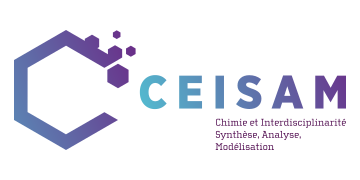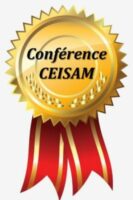Dans le cadre du cycle “Conférence CEISAM”, Andrew Ewing de l’Université de Göteborg en Suède, donnera une conférence le 26 octobre 2021 à 10h00. En raison de la crise du COVID, Andrew Ewing ne sera pas physiquement au CEISAM et la conférence sera donnée par visioconférence (https://univ-nantes-fr.zoom.us/j/92569880847).
Analytical measurements of subcellular organelles: from vesicles to stress granules
In recent years, micro-/nano-electrochemical approaches have been developed to
realize the quantitative measurement of intravesicular content and real-time monitoring
of their release dynamics. Our group has developed new techniques1-3 based first on
capillary electrophoresis followed by vesicle impact electrochemical cytometry (VIEC),
and subsequently stochastic VIEC and intracellular VIEC (IVIEC) to provide a highly
effective way to quantify the electroactive contents inside vesicles. This has allowed direct
comparison of the quantity of molecules released by exocytosis to those in the vesicles.
Partial release is observed across all cell types examined to date by the electrochemical
methods and appears to be regulated. To verify this, we developed an alternative approach
with NanoSIMS mass spectrometry imaging to examine the content of vesicles before and
after release. Here we demonstrate that not only do vesicles lose only part of their content
during exocytosis, they also can acquire substances (native or drugs) from the
extracellular solution.
We have used electrochemistry4 and imaging mass spectrometry5 with static SIMS to
directly examine plasticity that might lead to the formation of initial memory and a new
approach with both intracellular and extracellular measurements at the same time has led
to time resolved measurements of plasticity in real time.We have also used our cytometry methods to examine stress granules.6 These are membraneless subcellular organelles that assemble to capture mRNAs and proteins during stresses including oxidative stress, heat shock, viral infection, proteasomal inhibition, ER (endoplasmic reticulum) stress, UV irradiation, among others. We used nanoelectrode cytometry to determine that reactive oxygen species (ROS) are generated inside stress granules (SGs). Although the exact biological function of SGs remains to be discovered, our work unveils a correlation between SG biology and pathogenesis in neurodegeneration and some cancers.
References
1. D.M. Omiatek et al., Anal. Chem., 81 (2009) 2294-2302. 2. J. Dunevall et al., J. Am. Chem. Soc., 137 (2015) 4344–4346.
3. X. Li et al., Angewandte Chemie Int Ed., 54 (2015) 11978-11982. 4. C. Gu, A. Larsson, A.G. Ewing, Proc Natl Acad Sci USA, 116 (2019) 21409-21415. 5. C. Gu et al., International Journal of Molecular Sciences, 21 (2020) 9519-9528. 6. K. Hu et al., Angew. Chem. Int. Ed., 60 (2021) 2021 15302-15306.
Biography

Andrew Ewing is Professor of Chemistry and Molecular Biology at the University of Gothenburg, Sweden. He is a Knut and Alice Wallenberg Scholar (2011-2023), an elected member of the Royal Swedish Academy of Sciences, class 4 (chemistry), Nobel Class (2012) and the Gothenburg Academy of Arts and Sciences (2013). His research focusses on the neuronal process of exocytosis pioneering small-volume chemical measurements at single cells and the contents of individual nanometer vesicles in cells.

